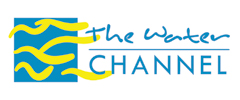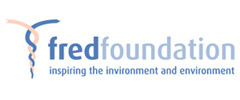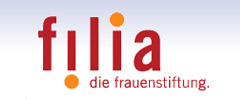Countdown to Copenhagen: "Linking local and global level" - a presentation by Sabine Bock in Ladakh, India
CDM recommendations and other possibly sustainable energy up-scaling tools
24.07.2009 |Sabine Bock - WECF paper

Summary:
Household and community level projects under the Kyoto-Protocol-Mechanism CDM (Clean Development Mechanism) can provide a much needed contribution to improving livelihoods in poor communities. These projects - better adapted to the local realities - reconcile the needs of reducing poverty whilst mitigating climate change. But so far the barriers for these kind of household level small scale projects are too high to become reality. WECF and partners develop suitable sustainable energy solutions for the different needs in the Central Asia and Caucasus region and look into the different possibilities of upscaling. Training of non profit multiplicators, training of small and medium enterprises (SMEs), policy development and international agreements and their financial mechanisms like the CDM are possibilities for that. As this year the new Post-Kyoto-Regime is negotiated and also the CDM reviewed, the focus is on suggestions WECF and partner Atmosfair, a CDM implementing non profit organization, handed in to the UNFCCC secreteriat, addressing the barriers of the CDM for household level projects.
Article Content:
-
1. Introduction of Women in Europe for a Common Future
WECF - the organization
WECF and energy - Safe energy for all in the EU and EECCA regions
WECF – our approach -
2. Upscaling tools
2.1. Network/multiplication
2.2. SMEs
2.3. Policies
2.4. International agreements/processes -
3. Conclusions
1. Introduction of Women in Europe for a Common Future - WECF
1.1. WECF - the organization
Women in Europe for a Common Future is a network of over a hundred women and environmental NGOs in over 40 countries in the EU and Eastern Europe, Caucasus and Central Asia. The network is managed by three management offices, one in the Netherlands, one in Germany and one in France. WECF strives for a healthy environment for all, for sustainable development, focusing on the issues of safe water/sanitation, safe rural development, safe chemicals and safe energy/climate protection. Crosscutting issues are sustainable development, public participation and environmental rights, poverty reduction, gender approach, environment and health. We support especially women as we see that so far the views of women are too often neglected in politics, economics and society. But we are convinced that only if we take women and men´s perspective equally into account, we can understand problems from all angles and develop truly sustainable solutions like the old chines proverbs states: “We need two eyes to see straight.”
We work on the local level with practical projects and bring our experiences and results to the policy level - local, national, regional and international and ask politicians to take action.
1.2. WECF and energy - Safe energy for all in the EU and EECCA region
WECF strives for the access to safe and sustainable energy for all in the region of the EU, South East Europe and the EECCA (Eastern Europe, Caucasus and Central Asia) region. We define sustainable energy as energy saving, energy efficiency and renewable energy, which is in line with human rights and the environment`s needs. Our focus is on decentralized sustainable energy as the potential for that is far beyond the possibilities. Therefore we strongly oppose the current energy situation, depending on fossil fuels, which cause global warming and nuclear energy, which is a threat to our health and existing at every step of production. We see effective climate protection and safe and sustainable energy as a matter of survival and as the solution for both – for safe supply of energy/energy security, in some region of the world also as alleviation of poverty, and as solution for climate change.
WECF – our approach
-
Involvement of all important multi-stakeholders (cooperation with authorities, polititians, enterpreneurs, scientists, public participation, local communities..)
-
Empowering of women and men, special attention to the situation of women as their perspective is often not taken into account
-
Working in the social context, using the gender approach, looking at health aspects
-
Strengthening local markets and self responsible civil societies
-
Linking practice and policy - from local to national/international level
2. Upscaling tools
2.1. Upscaling Tool: network – multiplication, for example project
“Climate protection via sustainable energy by training, capacity building and networking of local NGO partners in Caucasus and Central Asia”
-
Supported by the German International Climate Protection Initiative of the German Federal Ministry of Environment, Nature Protection and Nuclear Safety and gtz
-
Duration 02.10.2008 until 31.03.2009.
-
Target group:18 NGO partner in 7 countries
-
Objective: capacity building of multiplicators in the region
2.1.1. The Context:
The rural population in Central Asia and the Caucasus region is affected by extreme energy poverty, also in countries of fossil fuel resources like Kazakhstan. Even in the capital cities there have been blackouts, especially in Dushanbe, Tajikistan. In some rural regions there live 55 bis 60% of the population in poverty. Women and children are especially affected. The energy prices are rising rapidly (e.g. around 160% the last two years in Kyrgyzstan). The policy frameworks are not efficient enough, energy efficiency technologies and renewable energy are not really affordable. International financial mechanism like the Kyoto mechanism Clean Development (CDM) are not really accessible.
The region is affected by climate change: e.g. less percepitation, which increases the poverty in the region and decreases the supply of existing hydropower. Environmental problems like degradation for fire wood, erosion and social problems like migration occure. Poverty hits people hard, especially because of the continental climate with cold winters and hot summers. Energy is necessary for survival.
2.1.2. Women and climate change and energy in the region
Women are the most vulnerable groups and are most affected by climate change as 70% of the poor are women and they have less means to adapt. A lot of men migrate for work to Russia e.g., women stay in the harsh environment. And also regarding energy – e.g. women and children are the most affected by indoor pollotion, which is a problem in the region as 21.000 people die of indoor-airpollution every year in the EECCA region (WHO).
2.2. The activities
Three training programs were conducted for WECF partners and possible partner organizations, representatives of authorities, the private sector and science. The focus was put on the exchange of knowledge and experiences, climate change, sustainable energy initiatives and the implemetation of local sustainable energy supply and access to energy with theoretical, but also practical implementation. The content of the training was based on local needs and experiences, e.g. solar energy and biogas in Georgia or insulation and solar in Kyrgyzstan.

The three weekly training sessions took place in different countries and regions of the world (Munich/ Germany, Tiblisi/ Georgia, Bishkek/Kyrgyzstan) and two participation possibilities at the UN climate change conferences in Bonn, Germany and Poznan, Poland. Those were a combination of training and direct participation. The focus at the trainings sessions was on technology and knowledge transfer on different levels – from implementation to policy issues and the international UNFCCC process. It was important to show the variety of sustainable energy possibilities (e.g. from low cost to more advanced, but also more expensive solutions), but also the variety of different players and last, but not least also to transfer the knowledge into the given reality of the home context and activities of the partner NGOs. The program was a combination of presentations, excursions, workshops, discussions, conference days and own practical implementations (e.g. solar collectors and fruit driers in Armenia and in Georgia, insulation of a school in Azerbaijan or a feasabilitiy study on micro finance systems for biogas and solar installations in rural areas in Georgia). Different stakeholders (representatives of universities, local authorities, NGOs, experts, ..) had been involved as trainers and presenters. The exchange between the participants was important. At the United Nations Climate Change Conference from 1. - 12. of December in Poznan, Poland a delegation of the partner NGOs presented proven successes to reduce energy poverty by sustainable energy from the EECCA region at the joint side event with INFORSE, International Network for Sustainable Energy, on the 6. Of December. On the 11. Of December they shared the experiences from the region on „The need for better policies and practices to promote sustainable and renewable energies in Central Asia and the Caucasus as a solution to Climate Change“ and discussed how to bridge the gap between practice and policy.
Results and impact:
The improved knowledge and capacity of the trained stakeholders, especially of the 18 partner NGO is the most important result, which was made visible in demonstration projects and policy recommendation papers and presentations at the national and international level. But the built up knowledge and capacity can now lead to further impact and significant impact of different aspects:
Social, economical and environmental impact:
Sustainable energy can be a way out of energy poverty and shows possibilities to be independent of the availability of energy provided by the grid and the rising energy prices. Saving money for energy means more disposable income for other needs. Reliable energy supply means better live and working conitions. It also will improve the health condition, especially of women and children with activities like floor insulation and indoor pollution. Sustainable energy give the opportunity to improve the living situation of the people. Environmental degradation like deforestation is a huge problem for the region. Saving energy by using e.g. more energy efficient stoves will have an important effect on the ecosystem.
2.3.Upscaling tool: SMEs – small and medium sized enterprises
Sustainable energy is a huge chance for the economic development of the EECCA region, especially for small and medium sized enterprises. But as the knowledge about the opportunities and the right technologies, the right approach and use of them is missing, training and capacity building is important. Local entrepreneurs, women and men, need to be trained. Women participation at the trainings have to be possible, so they can make time to attend and for example child care for the children have to be provided. It is important to create a market by using local materials and to initiate local production.
2.4. Upscaling Tool – policies - e.g. Renewable Energy Law Germany
The Renewable Energy Law in Germany is a very good example to show the importance of laws for the success of sustainable energy.
A short introduction into the history of the law:
-
1991 - start with feed-in-tariffs
-
1999 - 2003 - 100.000 roof program of the German government, reasonable credits for small PV systems
-
1999 decision for RE law by the German government,
-
2000 in force (assured fixed prices for RE)
-
2007 - around 170.000 new workplaces

Graphic Source: German Ministry of Environment ,,, yellow: solar PV, green: bioenergy, light blue: wind, blue/violet: water/hydro
-
Best practice example worldwide - adaptation to country conditions necessary
-
RE power in Germany between 1990 – 2007, the graphic above shows a huge increase of renewable energy since the establishment of the law.
2.5. Upscaling tool - international mechanisms/agreements – e.g. CDM, review of the CDM for Post-Kyoto (decision at COP15 in Copenhagen 2009)
WECF and Atmosfair call for effective measures and tools to support the development of sustainable and equitable CDM projects
Household and community level projects under CDM can provide a much needed contribution to improving livelihoods in poor communities. These projects - better adapted to the local realities - reconcile the needs of reducing poverty whilst mitigating climate change. But so far the CDM is not really accessible for women and the poor, the barriers are too high. WECF addressed this issue already in Poznan at the COP 14 meeting last December and then developed jointly with atmosfair, a non –profit CDM implementing organization, a submission on
“Views on possible improvements to emissions trading and the project-based mechanisms”, submitted to the UNFCCC secreteriat on the 6. Feb. 2009. We also worked with CAN (Climate Action Network) on the CAN submission on this issue and started a dialogue with several countries about it. At the UNEP GC (Governing Council) meeting in Nairobi in Feb.09 and at Climate Change Talks, Bonn, March/April 2009, where we were raising awareness about it and presented our ideas and expiriences in side events like the one in Bonn on “towards sustainable CDM projects”. The main points: Make CDM accessible for household/community projects, which means
-
Support upfront financing (CDM bank providing up-front funding, grants for transaction costs)
-
Set a fix price for carbon for the project, to avoid communities making a loss on the CDM project
-
Accrediting specialized certifiers to ensure a timely validation and verification process.
-
Simplified registration procedures for micro-projects (<15,000 tonnes CO2eq/year) in rural areas and at the household level (e.g. standardized baselines
This is our proposal, taken from our submission:
“So far, CDM projects have failed to contribute to achieving sustainable development, as required in Article 12 by the Kyoto Protocol. Therefore we propose to create a simplified CDM mechanism for sustainable energy projects in rural areas at the household and community level, including improved funding conditions for smaller scale and cutting-edge-technology projects. Such projects should be developed in consultation with the local communities, including women, and should be accessible to them.
This simplified mechanism should cover a positive list of project categories dealing with energy supply and energy efficiency with high potential for poverty reduction, such as efficient cooking stoves, rural electrification based on renewable energy, home insulation in either low-income private households or public buildings like schools. Also following criteria should be in place: no significant other negative environmental impacts (e.g., toxics, endangered species, resource depletion, radiation), no human rights abuses (e.g., indigenous & forest community & women rights, reduced food security, access to water) and gender aspects have to be taken into account. Therefore the project should meet the criteria defined in the gold standard.
Funding
Projects at the household and community level generally need upfront funding and fixed CER (Certified Emission Reductions) prices.
a) We propose the establishment of a CDM Bank able to grant upfront funding secured by the issuance of expected Certified Emission Reductions (CERs) together with an insurance cover for household and community level projects.
b) Fixed and high prices of CERs should be introduced as a strategy to allow for solid financial planning.
c) There should be the possibility to award grants, co-funded from e.g. a percentage of EU and (future) global emission trading schemes to assist with transaction costs.
CDM approval process
To avoid the long and bureaucratic CDM registration procedure which is inappropriate for many household and community level projects, we suggest the following:
a) Implementation of a specialised UNFCCC working group that provides support to household and community level and assists the EB (Executive Board) in its currently ongoing efforts of improving and simplifying methodologies and approval procedures.
b) On-site capacity building provided by the UNFCCC working group for selected projects, providing methodological support to project proponents; members of the UNFCCC working would in turn gain important on-the-ground experience.
c) Establishment of specialised Designated Operational Entities (DOEs) for household and community level projects to guarantee faster as well as high-quality validation procedures, as currently some DOEs are hesitant to take on household or community level projects.
d) Establishment of easy and simplified methodologies to facilitate micro projects, (of less than 15,000t CO2/a) for example by defining standardised sectoral baselines such as maps to determine the share of renewable biomass for efficient cooking stove projects based on global vegetation zones.”
“Resources are limited, so the CDM has to be a mechanism, which will be crucial to foster the right type of development – truly sustainable and just like” above “introduced – in the form of small scale micro projects on household and community level, accessible for poor people, women and men alike. In comparison to that “nuclear energy is never save and a threat to human life at every step of production. It has to stay out of all emissions trading and project-based mechanisms, also the CDM.
Truly sustainable energy measurements like using the full potential of decentralized energy saving, efficiency and renewable energy is the only way to challenge climate change and provide solutions. It is crucial that Annex 1 countries do reduce emissions first of all in their own countries in the range of 25 - 40% and use the CDM offsetting mechanism only in small percentage – for truly sustainable CDM projects like described above.”
This role and responsibility of industrialized countries is highlihgted in the CAN position paper:” ..... From 2013 onwards, industrialized countries must make much deeper cuts in their domestic emissions and also provide financial flows independent of carbon crediting to support decarbonization, adaptation and tropical forest protection in developing countries. Credited actions in developing countries cannot replace ambitious domestic emission reductions in industrialized countries.” And as “specific co-benefits as a requirement for registration: all CDM projects must meet social and environmental standards such as those laid out in the CDM Gold Standard (renewable energy, benefits for locals, environmental integrity)
The assessment of the sustainable development contribution of projects should be undertaken by independent institutions such as DOEs (if selected and paid by UNFCCC).
So far the CDM failed to meet its dual objectives of supporting cost-effective climate change mitigation and sustainable development in developing countries. We are also not sure, if the CDM can become the right tool to reach these objectives. Right now we develop household level small scale projects or programmatic CDM in CCA voluntary market with atmosfair, gold standard
One study of atmosfair - done by Alexander Wirth looks into the possibility of eergy efficent stoves in Kyrgyzstan with WECF partner Camp Alatoo Kyrgyzstan, there is also interest von several coutries in the EECCA region to look into these kind of projects, like Georgia in energy efficent stoves. The definition of small scale projects of atmosfair and the new possibility of the programmatic CDM:
- minimum size ~2000t/a (~500kW hydropower, ~ 1000 small biogas plants, ~1000 solar water heaters), bundling of many small units in one project possible in conventional CDM
-„Programmatic CDM“ - new mechanism, which allows to add an unlimited number of „activities“, possibiity to include several countries
Conclusions
The potential of small decentralized household level projects for alleviation poverty and mitigating climate change with all side effects like avoiding environment degradation, etc.. is huge. Therefore I recommend following steps:
-
Exchange between different solutions for safe sustainable energy necessary with all stakeholders
-
Identifying of the best best practice examples
-
Using the huge potential of decentralized safe and sustainable energy by upscaling with all possible methods - networks, microfinance, business, policies, international mechanism
By Sabine Bock, WECF – Women in Europe for a Common Future,
Director Germany and Coordinator Energy and Climate Change
Contact:
sabine.bock@wecf.eu, www.wecf.eu
Related News
Meet the Winners of the Gender Just Climate Solutions Award at COP24
On the 70th anniversary of the Universal Declaration of Human Rights, we awarded Gender Just Climate Solutions Winners at the climate negotiations in Katowice, Poland
11.12.2018
Invitation: Gender Just Climate Solutions Award 2018
10 December, COP24 Katowice
04.12.2018
Getting to the Future We Want
4-7 November, Brussels: European Environmental Bureau’s (EEB) Annual Conference
12.11.2018
GoodFood4All
WECF and partners all over Europe start GoodFood4All Campaign
06.11.2018
#Ruralwomen: join our Women2030 campaign!
15.10.2018






































